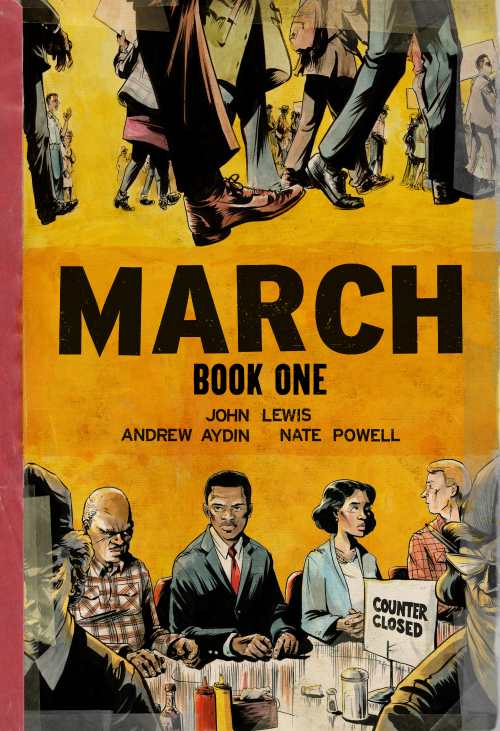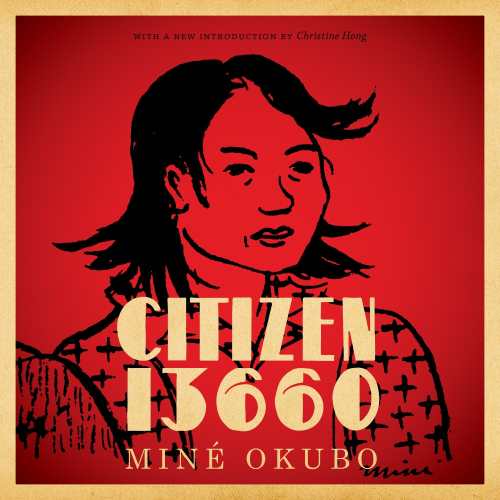Comics in Education: What if Students Actually Liked Reading for School?
School is well underway, so it’s time we talked about graphic novels in the classroom. Oh the horror! Say it ain’t so! Someone get this crazy millennial out of here! Now bear with me folks; I promise it’ll all be okay.
When was the last time you sat down and cracked open a history textbook or a science textbook and read through it? If it’s been awhile, go find one and remind yourself how terribly fascinating they are, I’ll wait.
Great stuff, right? Really riveting. Yes, but Allyce, you say, it’s a textbook. It’s supposed to impart wisdom, not “be interesting.” Once upon a time I would have agreed with you. I thought textbooks being boring was a fact of life, like death and taxes. But here’s a secret: books can be both informative and interesting. Oh, it’s not really a secret. Anyone who reads nonfiction for fun (or work) knows about the power of an engaging writing style and intriguing material. Now let’s take it one step further: what if your kid was reading a book that was informative, interesting, and one they were emotionally invested in? And that is where a graphic novel comes in.
Now I’m not saying we need to run around and replace all of our textbooks with graphic novels. Textbooks impart a huge amount of very specific information that graphic novels simply can’t handle. But I do think we can supplement them.
Monkey Brains Love Visuals
First of all, graphic novels are fun to read. They just are. Our monkey brains have liked telling stories with visual aids since we were drawing on cave walls. With more of the information coming through the pictures and less coming through the text, they’re a great gateway for reluctant readers. Or readers who have short attention spans (either from learning disability or not). Or readers who are learning English and can piece together what the words are by the context clues provided in the art.


Then there’s the fact that you connect more emotionally with art than you do with text. You aren’t just reading about the Civil Rights Movement or Japanese internment camps in World War II, you’re seeing them. There are suddenly faces to names or perhaps more importantly, faces to people whose names have been stripped by history.
Art gives the book an immediacy and a relatability that it didn’t have in pure text form. (Check out this American Libraries Magazine article about “how sequential art communicates.”) Cartoon entomologist Jay Hosler talks about making fun science books over at Boing Boing. As he points out, “Textbooks can explain science, but comics can make readers care about it.” And you know what the thing is about kids who really care about something? They remember everything about it. Whether it’s every single type of Pokemon or the words to every single song in Frozen. Now wouldn’t it be something if they felt that way about school?
Educational Indies
As my fellow blogger Anna Call has pointed out, a lot of really great science textbooks are coming from indie publishers. And naturally the same rings true for educational graphic novels. Here’s a short list to get you started:
- March: Book One by Congressman John Lewis, Andrew Aydin, and Nate Powell
- Citizen 13660 by Miné Okubo
- Strange Fruit by Joel Christian Gill
- Neurocomic by Dr Hana Roš and Dr Matteo Farinella
- Freud by Anne Simon and Corinne Maier
- The Warren Commission Report By Dan Mishkin, Ernie Colón, and Jerzy Drozd
- Wild Ocean by Matt Dembicki
- Trickster by Matt Dembicki

Allyce Amidon is the associate editor at Foreword Reviews where she blogs about comics and graphic novels. You can follow her on Twitter @allyce_amidon
Allyce Amidon
